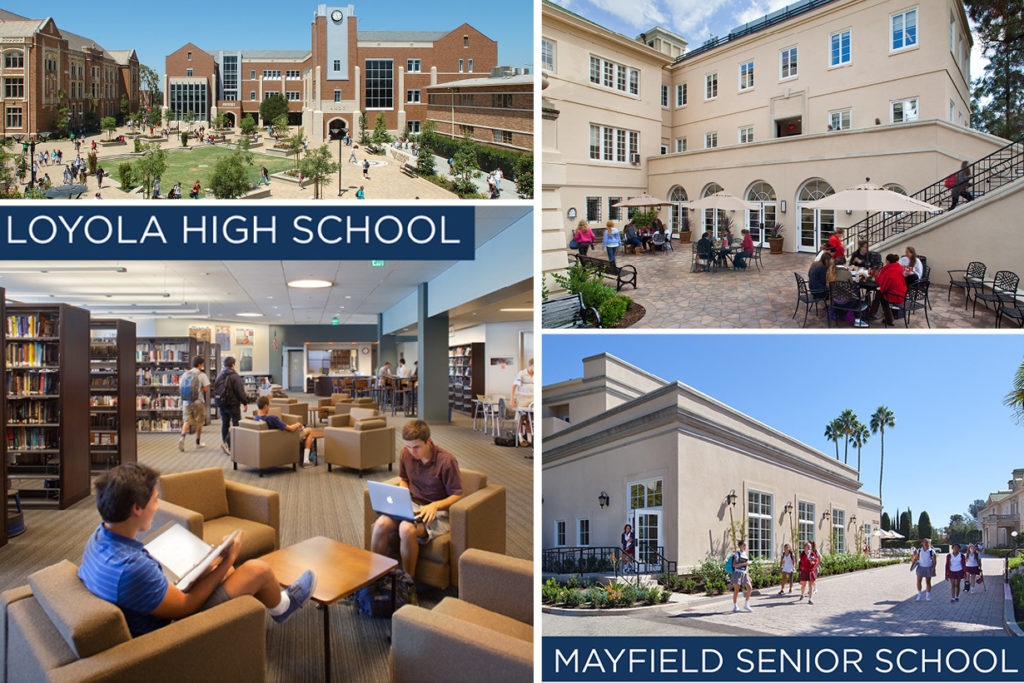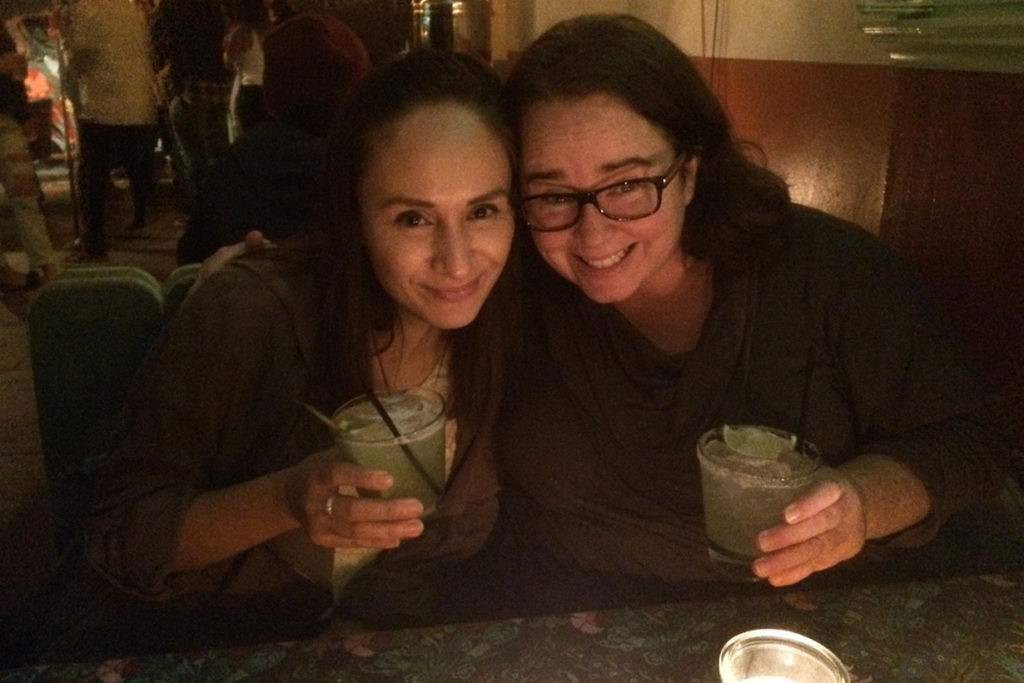Modern learning is dynamic! Teachers and students require learning spaces that go beyond the classrooms of the past. Andrey Aristov, Assistant Principal for Curriculum and Scheduling at Loyola High School in Los Angeles, and Rita McBride, Head of School at Mayfield Senior School of the Holy Child Jesus in Pasadena, discuss the importance of learning space design and the modern needs of teachers and students.
How have changes in education affected classroom design? How is the classroom of today different than the classroom of the past?
Rita: Students need space for learning that is flexible and can accommodate digital presentations, group work and project-based learning. Tables must be lightweight and easy to move. Space to hang and display work is also essential. It used to be that classrooms were designed and laid out with chairs facing forward with a teacher standing behind a lectern speaking to kids while using a chalkboard. That’s not the case now. The learning space has to be flexible for group work sessions and for project-based learning and be able to accommodate digital presentations.
Andrey: It seems to me that the classrooms of the 1980’s and earlier were based in a big part on furniture layout. Almost all classroom plans were the same. There was a clear divide between the teacher’s space (usually at the front of the room) and the students’ space. The teacher instructs from everywhere in the room and the same goes for students who are presenting ideas and sharing work. They move around from space to space as the activities dictate. A well-designed classroom allows for maximum flexibility such that teacher and students can work in small groups or separately with computers, or even as a complete class lecture. Every day is different and every lesson needs something else.
What role do community and social spaces play on your respective campuses?
Rita: Community and social spaces are essential for fostering interaction. Our mission is student focused and emphasizes strong relationships between students and faculty throughout the day and at events. Joy is a big part of Holy Child education. We have lots of social events and Hayden has already hosted an all school class party, faculty professional development sessions, a very formal and elegant dinner party for donors, freshmen homeroom, small group meetings, the Father Daughter dinner dance and the daily needs of a commons space for our students during free blocks. These are all essential for the many events that are part of a girls’ school.
Andrey: More and more teachers are taking their students outside or to other spaces around campus during class time. These trips can be to interact with the common space or to provide greater freedom to complete activities or simply for a change of venue. To step outside for even a few minutes in the middle of a class really helps to reenergize teenagers. When not in class, kids congregate in these same community spaces. At Loyola, this means different things to different people. Whether under a tree or inside the library or a clubroom, someone always has a laptop, phone, or iPad out.
How is the 2014 student different than the 1994 student? How has technology changed teaching and how has it changed classroom layout?
Rita: This is now a resource-rich, networking, creative use of content kind of world now. A student doesn’t necessarily need to go to the library or even to a book. You can basically access any kind of knowledge from anywhere, on a dime. The bigger question is what do you do with it? So in 1994, students were mostly concerned about receiving knowledge that was being imparted from a single human source that was standing in front of them. And now it’s not about receiving knowledge. Now a student can easily receive knowledge, and we as educators are interested in knowing what he/she will do with this knowledge.
Andrey: Technology has decentralized the “power structure” of the classroom. A long time ago, the teacher was the only person who had ready access to the material being presented in the form of teacher’s editions, primary sources, reference materials, periodicals, etc. It was his/her job to deliver the material to the students. Today, students have instantaneous access to all this information and can share it with their classmates in seconds. Teachers are developing methods to use this new dynamic as a kinetic teaching tool. Well-designed classrooms enhance this ability. Wireless connections; plenty of computers, laptops, and/or iPads connected to projectors; carts and docks for charging all this technology; robust and reliable electrical grids; and student and technology-friendly furniture are all important elements of the modern classroom.
Has homework changed much in 30 years?
Rita: There’s what they call the split classroom, where the lecture and the imparting of knowledge is happening more outside of the classroom. And what you’re doing with it is happening inside the classroom with the teacher. So now a student might go home and get online, get the lecture and information, and possibly even observe a lab. The student then comes back into the classroom prepared to talk about it, and is also prepared to do something with that content. So, homework has changed from just going home and reading the content and then coming the next day and having it explained. Teachers are now presenting the content, having the students go home, and receiving it other ways, not just through a book. We have also gone to class periods that are now 80 minutes instead of 50 so that kids can go home and witness a lecture or read from several sources, and then come into the classroom and spend some real time processing this information.
Andrey: Homework seems to have become less important over the years. Whereas some students still spend many hours each night completing assignments, this seems to be the exception rather than the rule. Because of technology, essentially every topic is available on-line. This access to so much information makes it harder for teachers to identify truly original work, so they have begun to de-emphasize the importance of homework. But homework is still a very valuable teaching tool and can be done effectively with proper guidance and oversight.





